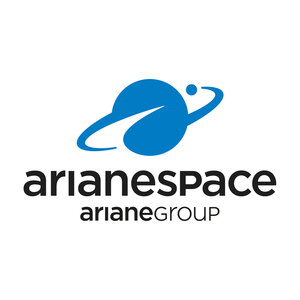Watch live: Vega-C to launch Sentinel-1C
Update: launch postponed to Thursday 5 December 2024.
Due to a mechanical issue preventing the withdrawal of the mobile gantry, the launch chronology has been stopped.
The earliest targeted launch date is planned for tomorrow Thursday 5 December 2024 at 22:20 CET (18:20 local time in Kourou). The launcher and its passenger the Copernicus Sentinel-1C satellite are in stable and safe conditions.
Tune in to ESA WebTV on 5 December from 22:00 CET to watch the satellite soar into space on a Vega-C rocket to be launched from Europe’s Spaceport in Kourou, French Guiana.
The launch will be the return to flight for Vega-C, Europe’s lightweight, high-performance rocket – further securing Europe’s autonomy in space after the successful launch of Ariane 6 last summer.
Once in orbit, Sentinel-1C will extend the Sentinel-1 mission’s legacy, delivering radar imagery to monitor Earth’s changing environment to support a diverse range of applications and scientific research.
Follow the launch live from Kourou (all times CET)
Follow the launch live on ESA WebTV on 5 December from 22:00 CET.
| Time in CET | Time after liftoff (hours:minutes:seconds) |
Event |
| 22:00 | Programme begins | |
| 22:20 | 00:00:00 | Liftoff |
| 22:22 | 00:02:21 | Vega-C first stage P120C separation |
| 22:25 | 00:04:32 | Vega-C second stage Zefiro-40 separation |
| 22:25 | 00:05:03 | Fairing jettison |
| 22:27 | 00:07:08 | Vega-C third stage Zefiro-9 separation |
| 22:28 | 00:08:16 | First ignition of Vega-C upper stage, AVUM+ |
| 22:52-23:11 | Programme break | |
| 23:14 | 00:53:27 | Second ignition of upper stage, AVUM+ |
| 23:18-00:00 | Programme break | |
| 00:01 | 01:40:29 | Third ignition of upper stage, AVUM+ |
| 00:04 | 01:43:51 | Sentinel-1C separation |
| 00:16 | 01:56 | Acquisition of signal |
About Copernicus Sentinel-1C
The Sentinel-1 mission, the first in the family of Copernicus, is based on a constellation of two identical satellites flying in the same orbit but 180° apart, to optimise global coverage and data delivery for Copernicus – the Earth observation component of the EU’s Space Programme.
Sentinel-1A was the first satellite in the series, launched in April 2014, followed by the launch of Sentinel-1B in 2016. The Sentinel-1B mission came to an end in August 2022 after experiencing a technical fault that rendered it unable to acquire data. The satellite has been successfully de-orbited and will re-enter Earth’s atmosphere within 25 years.
Sentinel-1C, along with its sibling Sentinel-1A, will return the mission to its full potential as a two-satellite constellation. Sentinel-1A is then due to be replaced by Sentinel-1D later next year.

As an advanced radar mission, Copernicus Sentinel-1 can image the surface of Earth through cloud and rain and regardless of whether it is day or night. Sentinel-1 carries a C-band synthetic aperture radar (SAR) instrument, which allows it to capture high-resolution imagery of Earth's surface.
This powerful radar system operates in several modes, including wide swath and high-resolution, providing detailed data on land subsidence, ice movements and ocean conditions.
The new Sentinel-1C satellite will also carry a new Automatic Identification System (AIS). Developed by the International Maritime Organisation, this system is designed to help ships avoid collisions, particularly when they are too far from land-based radar systems. This technology assigns a unique ID to each vessel and tracks its position and movements in real-time, creating a virtual map of the ships at sea.
More information about Copernicus Sentinel-1
About Vega-C

Europe’s Vega-C rocket can launch 2300 kg into space, such as small scientific and Earth observation spacecraft. At 35 m tall, Vega-C weighs 210 tonnes on the launch pad and reaches orbit with three solid-propellant-powered stages before the fourth liquid-propellant stage takes over for precise placement of satellites into their desired orbit around Earth. Vega-C is the evolution of the Vega family of rockets and delivers increased performance, greater payload volume and improved competitiveness.
Complementing the Ariane family to launch all types of payloads into their desired orbits, Vega-C ensures that Europe has versatile and independent access to space. ESA owns the Vega-C programme, working with Avio as prime contractor and design authority. Arianespace will serve as the launch service provider for the launch of Sentinel-1C.
This launch marks Vega-C’s return to flight, a key step in restoring Europe’s independent access to space. The first commercial flight in December 2022 failed due to a nozzle issue in its Zefiro-40 motor. Since then, an improved nozzle was designed and built and the complete Zefiro-40 stage has undergone two successful firing tests, in May and October 2024, which demonstrated the motor's ability to perform reliably under different pressure conditions and burn durations. These tests have confirmed the motor's readiness, clearing the path for Vega-C’s upcoming flight.
Can't wait for launch day? Print out these instructions and template to make your own Vega-C paper model.
Follow us on social
Follow ESA on social media for more updates and live coverage of the Copernicus Sentinel-1C launch using the #Sentinel1
X: @esa @ESA_Earth Observation @ESA_transport @ESA_Operations
Instagram: @europeanspaceagency @ESA_Earth
Facebook
YouTube
LinkedIn
Pinterest















 Germany
Germany
 Austria
Austria
 Belgium
Belgium
 Denmark
Denmark
 Spain
Spain
 Estonia
Estonia
 Finland
Finland
 France
France
 Greece
Greece
 Hungary
Hungary
 Ireland
Ireland
 Italy
Italy
 Luxembourg
Luxembourg
 Norway
Norway
 The Netherlands
The Netherlands
 Poland
Poland
 Portugal
Portugal
 Czechia
Czechia
 Romania
Romania
 United Kingdom
United Kingdom
 Slovenia
Slovenia
 Sweden
Sweden
 Switzerland
Switzerland































